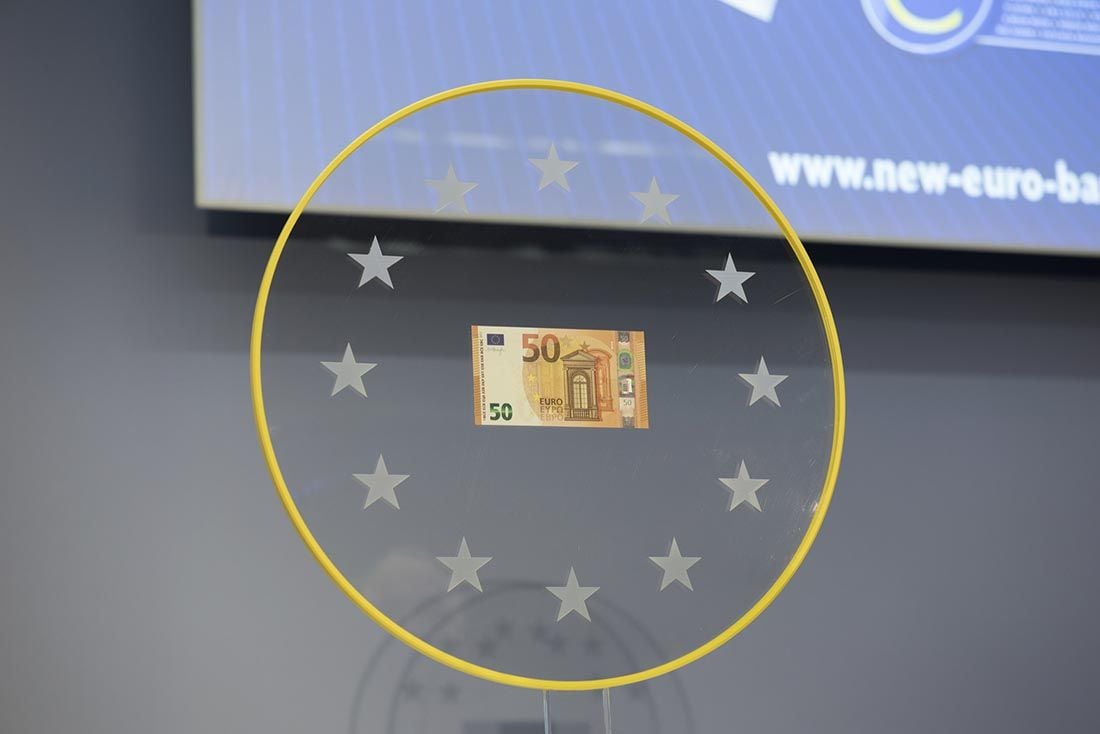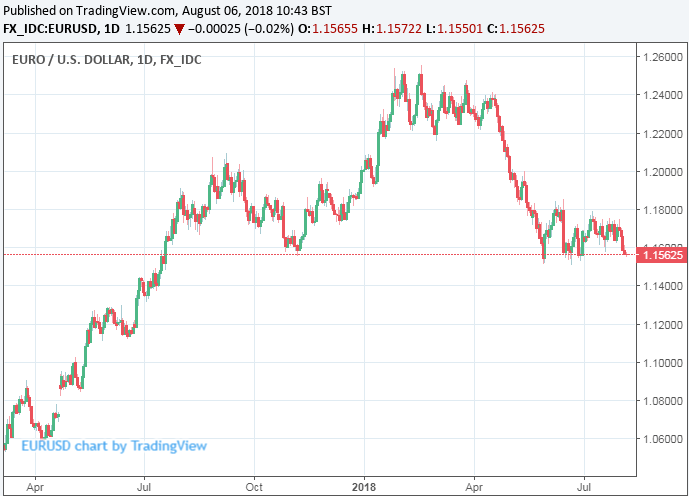Euro Decline is Far from Over as New Lows Await this Summer say Analysts
- Written by: James Skinner
-
- Eurozone outlook dims as German factory orders slump in June.
- Data comes as fears over Italian politics appear on radar again.
- EUR/USD to break 1.15 this week and fall to new lows this summer.

© European Central Bank
The Euro was steady Monday but a stalling continental economy means the single currency will set new lows against the Dollar before the summer is out, according to analysts from some of Europe's largest banks.
Bearish calls on the Euro come at a time when currency markets are taking their lead from the relative performance of national economies.
And recently economic data has shown momentum in the Eurozone economy dissipating, while across the pond President Donald Trump's tax cuts have seen the US economy shift into a higher gear.
With the economic league tables having turned against the Euro back in the first quarter, the single currency has turned what was a 4% 2018 gain as recently as the middle of April, into a 3.6% loss.
This came in tandem with a similar move in the trade weighted US Dollar, which has converted a 4% 2018 loss into a 3.2% gain.
"EUR/USD price action remains poor and today’s release of German Factory Goods for June, -4% MoM, bodes ill for tomorrow’s Industrial Production release," says Chris Turner, global head of FX strategy at ING Group. "EUR/USD looks headed down to the 1.1500/1510 area, which is big support but could be broken in thin summer markets."

Above: EUR/USD rate shown at daily intervals. Captures 2017 rally and 2018 decline.
German factory orders data for June provided fresh impetus to the Euro bears Monday, with new purchase orders seeing their largest decline since January 2017. The current market focus on relative economic performances means this could be an important moment for the Euro, particularly as the lion's share of June's decline was driven by a fall in export orders.
"Even though new orders data are highly volatile, the June report could be a tentative sign of how trade tensions are hitting the German economy," says Carsten Brzeski, chief economist at ING Group. "While Eurostat already released a preliminary flash estimate for GDP growth in the entire eurozone in the second quarter, Germany has only today started to count hard data for the month June. It was definitely not a good start."
Foreign orders from outside of the Eurozone dropped by almost 6% in June while domestic orders declined 2.8%. This comes ahead of June's industrial output numbers due for release on Tuesday, and after IHS Markit PMI numbers showed the Euro bloc's economy entering the third quarter on the back foot.
Germany accounts for close to one third of Eurozone GDP so developments around the economy often set the tone toward the broader bloc as a whole.
And with Germany's export-oriented economy most exposed to President Trump's trade war with China, and losing momentum just as Italian politics come back into focus for the market, sentiment toward the single currency may be about to turn for the worse.
"All is doom and gloom again and a test of 1.15 is in prospect," says Kit Juckes, chief FX strategist at Societe Generale. "BTP/Bund spreads are correlating with the currency, which is a sure sign of trouble as Italian fiscal policy moves into the limelight, and soft German orders data are reviving fears that the European economy is heading in the wrong direction again."
Juckes goes on to say the odds are stacked against those who would like to see the EUR/USD rate break below the 1.15 threshold but that thin summer markets mean this cannot be completely ruled out.

Above: EUR/USD rate shown at weekly intervals. Captures QE years from 2015-present.
But the ING team are not quite so optimistic, while analysts at Bank of America Merrill Lynch are betting the exchange rate will fall far below this level before the summer is out.
"We remain concerned about Italy. This fall, the coalition government may try to test the rest of Europe on what they could get away with in fiscal policy loosening. The Europeans may not be able to be too flexible, given Italy's commitment to actually reduce its deficit in order to stabilize and eventually start reducing its huge debt," says Athanasios Vamvakidis, a currency strategist at Bank of America.
EU fiscal laws, some of which were strengthened after the Eurozone debt crisis, have made far-reaching austerity a mandatory menu item for many Southern European countries in recent years. The rules require national budgets to be submitted to Brussels for approval by October at the latest.
Fears are that Italy's budget is destined to be rejected, which would place Brussels and Italy's coalition government on a collision course that serves only to stoke the fires of Euroscepticism in Rome and beyond. This could give way to renewed concerns over a possible Italian exit from the Eurozone.
Vamvakidis and the BAML team recommended in April, when EUR/USD was trading around 1.23, that clients of the bank bet on a fall to 1.15 over the summer months. They also forecast the Euro-to-Dollar will decline to 1.12 before the end of September and that it will recover only as far as 1.14 in 2018.
These are substantial downgrades from Bank of America's earlier targets, which envisaged EUR/USD bottoming out at 1.15 in the third quarter and rising back to 1.20 before year end.
The EUR/USD rate was quoted 0.03% lower at 1.1561 Monday and is now down by 3.6% for the 2018 year-to-date.
Advertisement
Get up to 5% more foreign exchange by using a specialist provider to get closer to the real market rate and avoid the gaping spreads charged by your bank when providing currency. Learn more here




